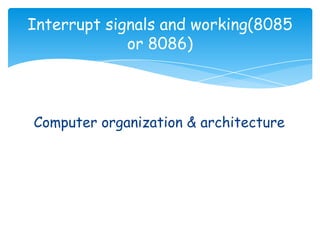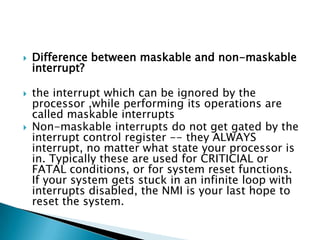The document discusses microprocessors and interrupts in computer systems. It describes how the first microprocessor was developed by Intel and Busicom in 1971. It then covers several Intel microprocessor models from the 4004 to the 8088 and beyond. The document also defines interrupts as signals that cause the CPU to pause its current task and service the interrupt. It distinguishes between maskable, non-maskable, software, and hardware interrupts and provides examples of each. Finally, it discusses the different software interrupts available in the 8085 microprocessor.




























